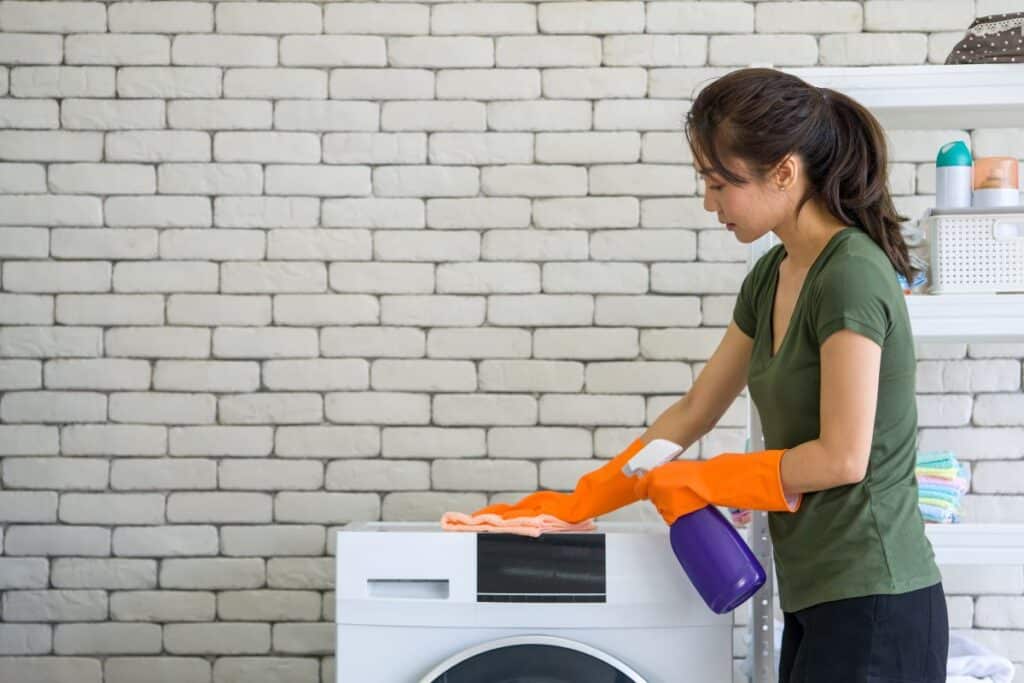You have been using your well-loved washing machine for years now. You always get clean and good-smelling clothes after every wash. Over time, you may notice you are operating a particularly smelly washing machine and may even see the growth of mildew and molds.
You can make a homemade washing machine cleaner made from natural products. Mixing together white vinegar, baking soda, and some essential oils can be as effective as commercial washing machine cleaners.
Read on to find out how you can make your own natural washing machine cleaner.
Quick Navigation
- For Weekly Cleaning
- For Deep Cleaning
- How To Clean A Washing Machine Naturally
- Cleaning a Top-Loading Washing Machine
- Cleaning a Front-Loading Washing Machine
- Conclusion
For Weekly Cleaning

Your washing machine does the dirty work for you on a weekly basis. It is also best that you do your share of dirty work and clean your washing machine.
Below are the supplies needed to make a natural cleaner for your washing machine and instructions on how to make it.
Supplies Needed
You will need:
- ¾ cup of white vinegar
- 10 drops of tea tree oil
- 5 drops of grapefruit oil
How to Mix
The first step in making a homemade washing machine cleaner is to thoroughly mix all three ingredients. Then, pour the mixture into a spray bottle. Easy.
How to Use
Before using it on your machine, shake the spray bottle first. Then, you may start spraying the rubber seal, door, lid, and washing tub. Allow the mixture to be absorbed by the machine for a couple of minutes. After which, use a cleaning rag to wipe down the mixture.
For Deep Cleaning
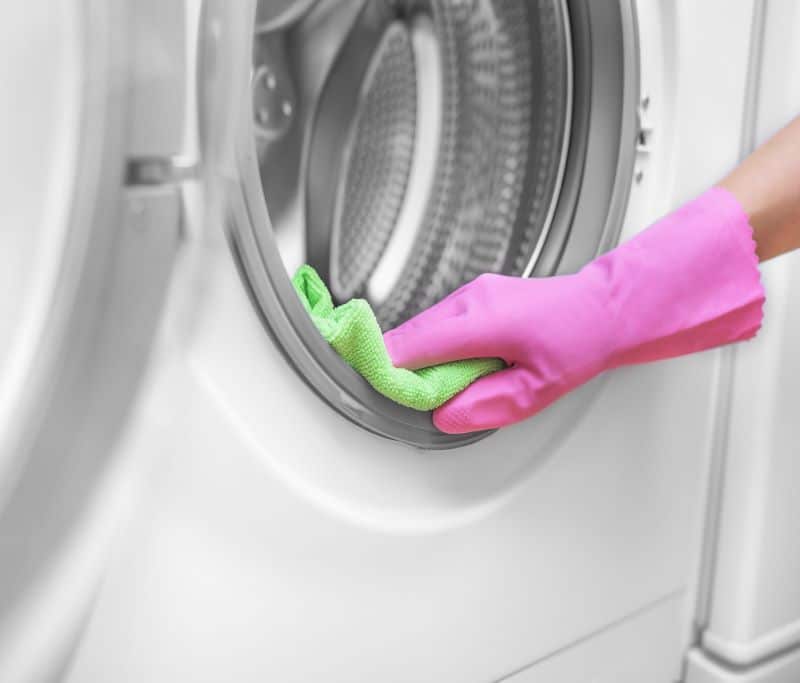
Cleaning your washing machine weekly is a great help in making it function longer. However, more than basic cleaning is needed to get the job done; you’ll need to do deep cleaning.
Below are the supplies needed to make a deep cleaning cleaner for your washing machine and instructions on how to make it.
Supplies Needed
To deep clean your washing machine, you will need:
- ½ tsp dish soap
- 4 tbsp washing soda
- 1 cup (0.24 liters) white vinegar
- 20 drops of tea tree oil
Washing soda, also called soda ash, is an excellent agent in removing grease build-up due to laundry softeners and hardened soap scum. It can help unclog your washing machine drain during the first rinse cycle.
Always wear protective gloves when washing soda because this can cause skin irritation.
How to Mix
You will need to thoroughly mix white vinegar and tea tree oil in a container. Set aside the dish soap and washing soda, so they are not to be mixed with the other ingredients.
How to Use
The first step is detaching the detergent tray from the washing machine. Soak the tray in hot water mixed with dish soap. If you can use eco-friendly dish soap, the better.
Let the tray soak for a few minutes, then scrub any build-up you see with an old toothbrush. Once you clean the detergent tray, you may return it to the washing machine.
To clean the drum, you have to pour washing soda. Let your washing machine run on the hottest washing cycle. After the cycle, it is time you pour the white vinegar and essential oil mixture into the liquid dispenser.
Again, run the machine in the hottest cleaning cycle. Wipe down all the areas as soon as the cleaning cycle is done. Let it air dry by leaving the lid open before doing any laundry work.
How To Clean A Washing Machine Naturally
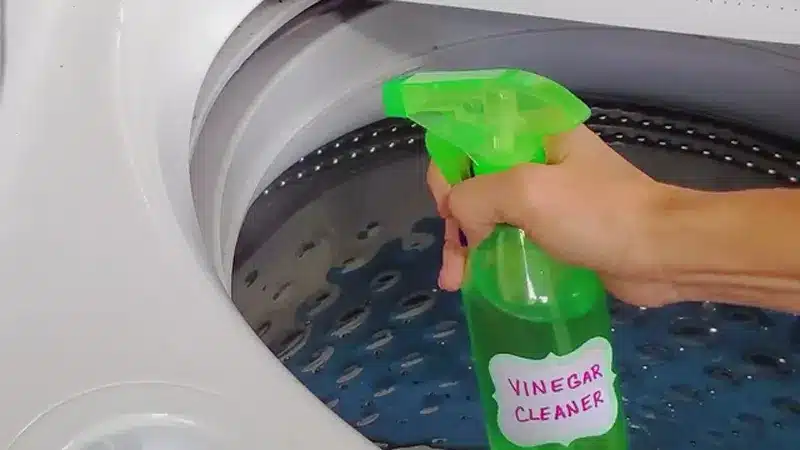
You can make a natural washing machine cleaner in the comforts of your home by using vinegar, baking soda, and your preferred essential oil. You must refer to your washing machine’s instruction manual before using these natural ingredients.
Generally, these natural ingredients are safe to use on washing machines, but you must take extra precautions when using these items while scrubbing protective coatings, especially rubber components.
If you are using homemade and natural washing machine cleaner, it is advisable to run it on your machine 2–3 times yearly to help prevent residue build-up caused by laundry detergent.
Mineral build-up can build up faster on the machine’s joints and other wet surfaces. If this is the case, cleaning your washing machine regularly every three months is best.
Cleaning a Top-Loading Washing Machine
Below are the steps on how you can clean top-loading washing machines:
1. Pour Vinegar into the Washing Machine
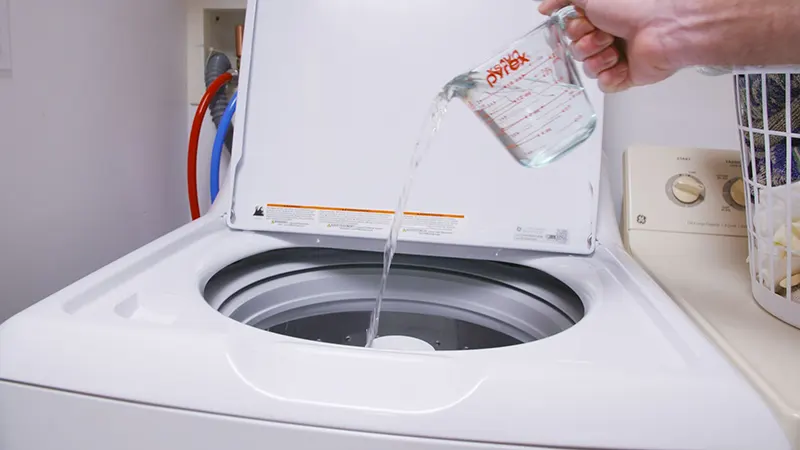
Fill up your washing machine with the hottest water temperature possible. Mix 4 cups (0.95 liters) of white vinegar while the washing machine fills up with water.
Once the machine is full, allow the load to initially run on a normal wash cycle and set the machine to pause. Let the mixture of water and vinegar sit for at least an hour. Doing this helps break down the mineral build-up and detergent residue along the walls of your top load washer.
2. Clean the Exterior
While your top-loading washer is running (step 1), you can start cleaning the exterior. You will need to wipe it with the recipe discussed in this article with a dampened cloth.
3. Scrub the Detergent Dispenser
Aside from regularly cleaning the load space, you must also clean the fabric softener dispensers and detergent drawer. You can remove the dispensers and drawers and scrub them using an old brush and the homemade washing machine cleaner.
4. Restart the Washing Machine
After waiting for an hour (step 1), you should restart your washing machine. Set your machine to run on a full normal wash cycle. After which, you may proceed to step 6.
5. Optional: Add Your Favorite Essential Oil
Essential oils can help remove the foul smell coming from your washing machine. Some essential oils help fight mold and mildew.
Oregano, thuya, clove, clary sage, thyme, and lavender are essential oils with antibacterial and antifungal properties. Consider using these oils for your washing machine.
6. Run a Cycle Using Baking Soda
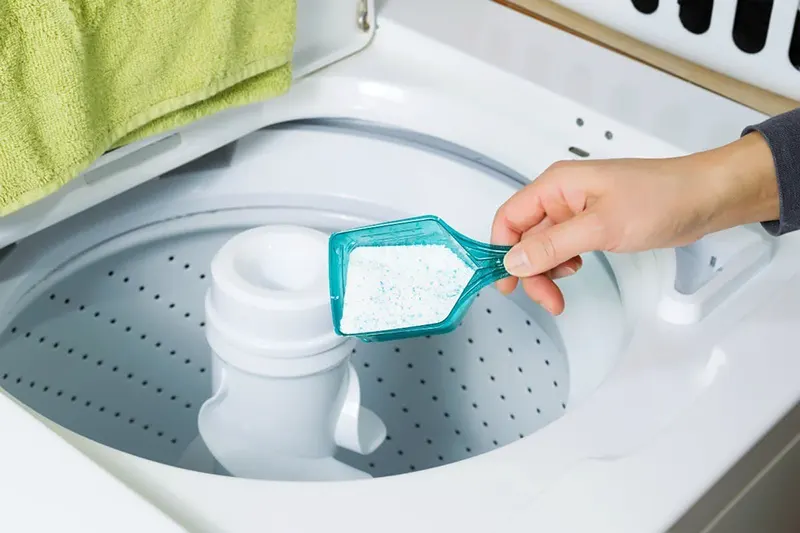
After the first tub clean cycle using vinegar, you need to let the machine run another cleaning cycle with a mixture of baking soda (1 cup (0.24 liters)) and essential oils (3 drops). Let the baking soda and essential oils mixture run through a long hot water cycle.
7. Air Dry the Interior
After letting the machine run two washing cycles, drain the machine completely. Open the lid to allow the interior to air dry. You may also wipe dry the interior before closing the machine.
Cleaning a Front-Loading Washing Machine
Cleaning a front-load washer is challenging compared to a top-loading washer. You will need to clean a front loader 2–3 times a year. If you use hard water for laundry, you must clean your machine every couple of months.
1. Spray the Interior with Vinegar
Spray the interior of your front-loading machine thoroughly with white vinegar. Let the vinegar sit for a couple of minutes. While waiting, you can wipe with cleaning rags the door of the machine as well as the rubber gasket with white vinegar. Remove all molds, mildews, and soap scum that you see.
Don’t forget to wipe the metal washer drum. You can use an old toothbrush to scrub clean the trays of detergent and bleach and the fabric softener dispenser.
2. Clean the Rubber Gasket
Your rubber seal is the dirtiest part of your washing machine that needs intense cleaning. This is where most of the water and moisture are collected. Scrub clean with a soft bristle nylon brush in your washing machine, seal with a cleaning mixture of vinegar and baking soda.
3. Vinegar Wash Is a Must!
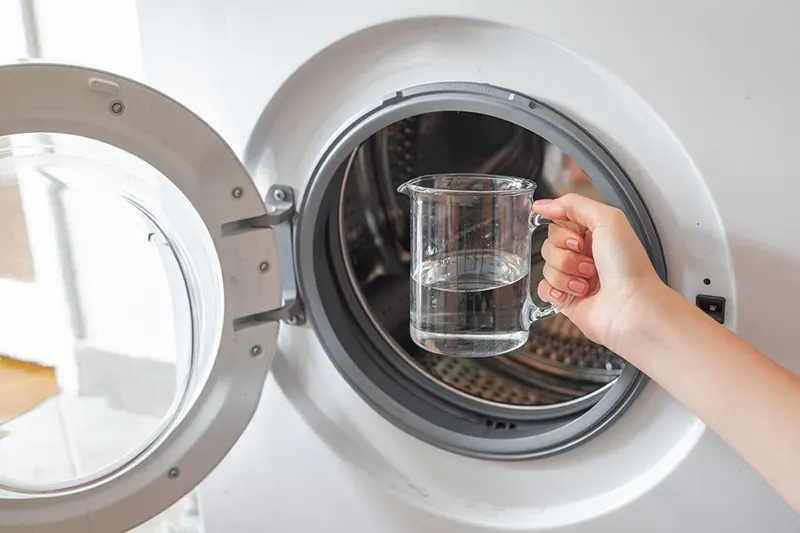
Vinegar is an important ingredient in cleaning your washing machine. Pour 2 cups (0.47 liters) of white vinegar into the detergent dispenser and close the washing machine door. Set the machine setting to run a long hot water cycle.
4. Run a Load with Baking Soda
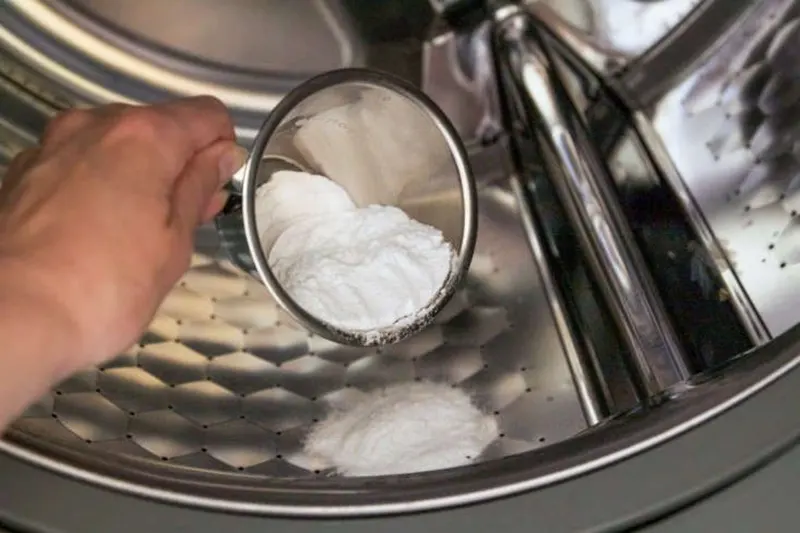
After the vinegar cycle, drain the vinegar out. Run another large, hot water cycle with ½ cup of baking soda and drops of essential oils.
5. Clean the Exterior
While your baking soda and essential oils are still running inside your washing machine, you can clean the exterior of your machine. Wipe clean your machine’s exterior using vinegar.
6. Dry Out the Interior
After all the cleaning cycles are done, it is time to wipe clean, and air dry the interior of the washing machine by leaving the door open. Open the machine’s root and pipe down with a dry cloth.
Conclusion
Cleaning washing machines is a tedious chore. Despite that, regularly maintaining your machine saves you money from costly repairs (or, worse, buying a new one).
Whichever cleaning method you choose, cleaning will eliminate moldy smells caused by fabric softener deposits and detergent residue. It is advisable to use natural washing machine cleaners to clean washing machines instead of strong chemical machine cleaners. It’s one way to make sure you get to have really clean clothes when you do your laundry.

